Fleas can be a menace for both you and your furry friend, causing irritation, itchiness, and even potential health issues. When it comes to finding the right solution to eliminate these pesky parasites, you may have come across Pine-Sol as a possible answer. Have you wondered “Does Pine-sol kill fleas?” Is Pine-Sol safe or even effective to use around pets for combating fleas? This blog aims to answer all your questions and concerns by diving deep into the world of Pine-Sol and exploring its potential use in the fight against fleas.
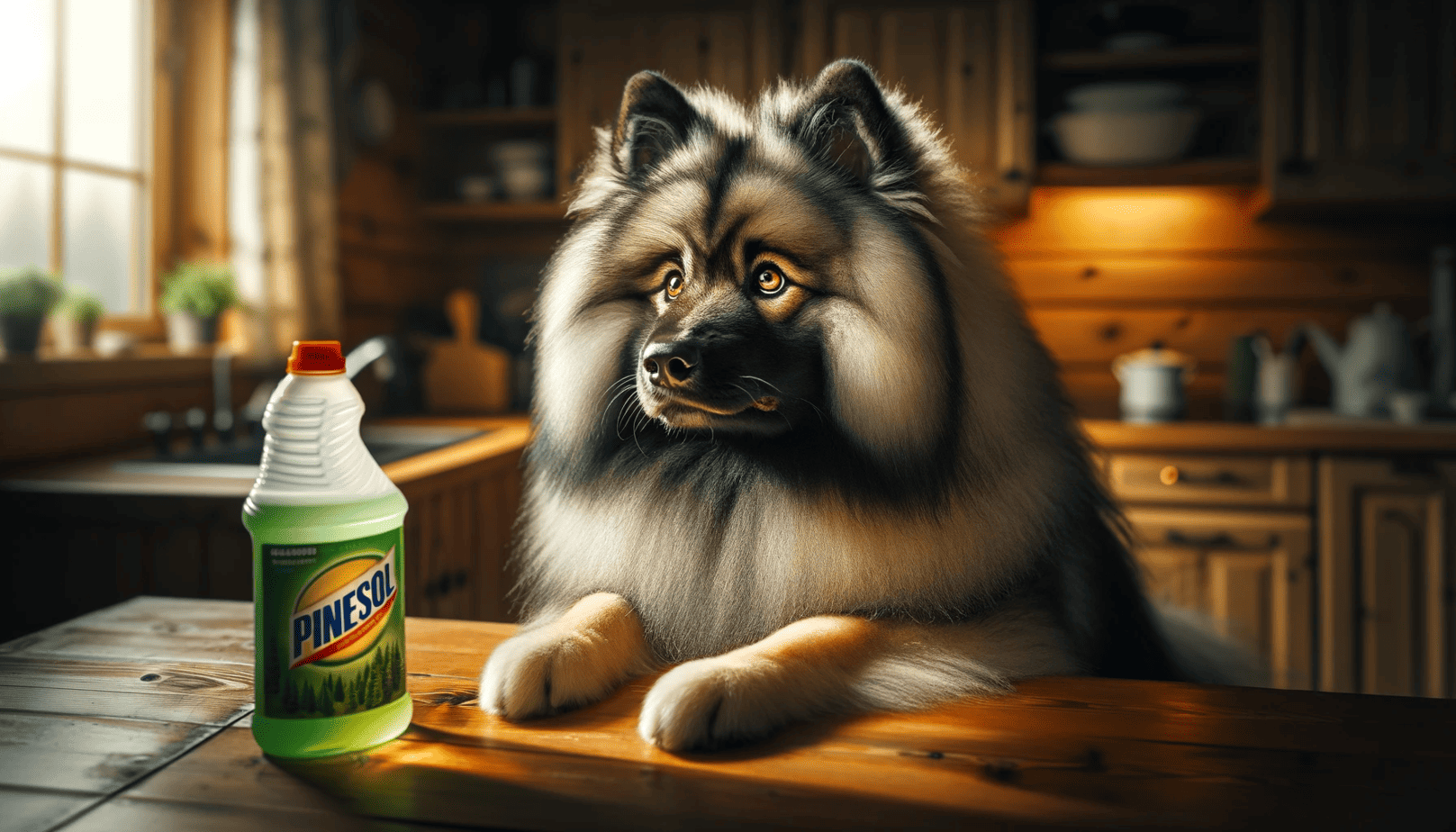
We’ll start by identifying the signs and symptoms of flea infestations in dogs and discussing various detection techniques. Then, we’ll examine Pine-Sol’s ingredients to understand what makes it effective against fleas, but also why it’s not safe for use on dogs. We’ll provide a comprehensive guide on alternative household items and products specifically designed for treating fleas, and when it’s necessary to consult your veterinarian for professional intervention.
In addition, we’ll touch on other topics such as precautions when using Pine-Sol around pets, its potential toxicity in dogs, and its efficacy against ticks. You’ll also find helpful tips for keeping your home flea-free while prioritizing the safety of your pets. Lastly, we’ll compare Pine-Sol’s effectiveness to other alternatives like Dawn dish soap and provide our final verdict on the most suitable and safe options for dealing with flea problems.
So, buckle up and get ready to dive into the world of flea control and pet safety as we provide you with the answers you’ve been searching for!
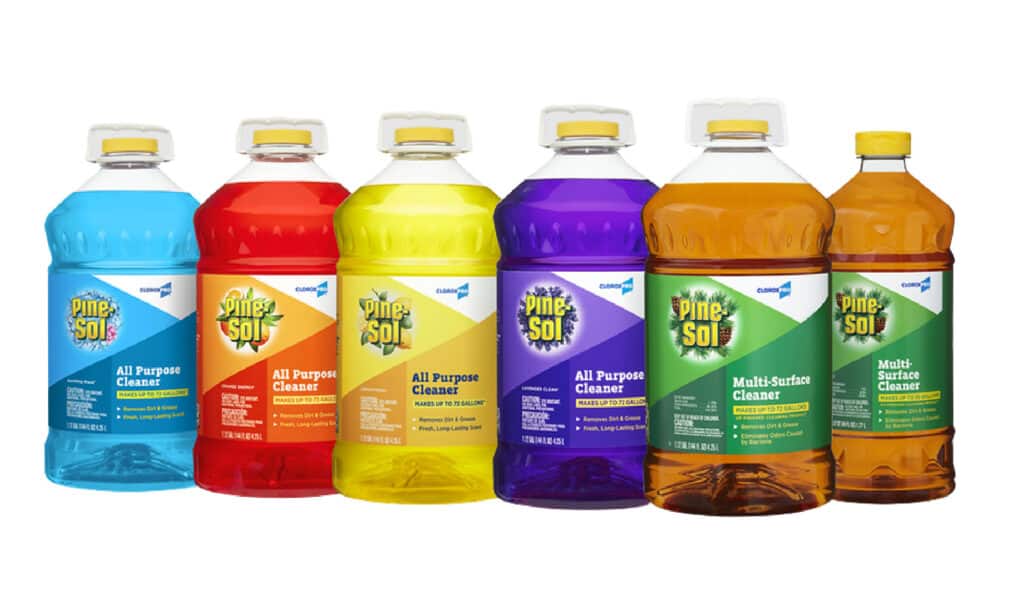
Identifying Fleas on Your Dog: Signs, Symptoms, and Detection Techniques
Identifying fleas on your dog is the first step in addressing a flea infestation. Being aware of the signs, symptoms, and detection techniques will help you act quickly and protect your dog from the discomfort and potential health issues caused by these parasites.
Signs and Symptoms
Fleas can cause various symptoms in dogs, which can be easily noticed if you know what to look for. Some common signs and symptoms include:
- Excessive scratching, biting, or licking: Dogs infested with fleas will often scratch, bite, or lick themselves to relieve the itchiness and irritation caused by the parasites.
- Redness and irritation: Flea bites can cause redness, inflammation, and irritation on your dog’s skin.
- Hair loss: Prolonged scratching and biting can lead to hair loss or thinning, particularly around the base of the tail, hind legs, and belly.
- Flea dirt: Flea feces, or “flea dirt,” may be visible on your dog’s fur or skin. This looks like small, dark specks that turn reddish-brown when wet.
- Flea allergy dermatitis: Some dogs are allergic to flea saliva, resulting in an intense reaction to bites, which can cause severe itching, hair loss, and skin infections.
Detection Techniques
Detecting fleas on your dog requires vigilance and some simple techniques to confirm their presence. Here are some methods to help you find fleas on your pet:
- Visual inspection: Comb through your dog’s fur, paying close attention to the base of the tail, hind legs, and belly. Look for live fleas, flea dirt, or flea eggs (tiny white specks).
- Flea comb: Use a fine-toothed flea comb specifically designed to trap fleas and their eggs. Comb your dog’s fur from head to tail, making sure to check the comb for fleas after each pass.
- White towel test: Place a white towel or paper towel beneath your dog and comb through their fur. Fleas or flea dirt that fall onto the towel will be more visible against the white background.
- Water test: Collect any suspicious specks you find while combing your dog and place them on a wet, white paper towel. If the specks turn reddish-brown, they are likely flea dirt, indicating the presence of fleas.
If you identify fleas on your dog, it’s essential to take action quickly to prevent the infestation from worsening. Consult your veterinarian for advice on the best flea treatment options for your pet, and make sure to treat your home environment to eradicate any remaining fleas and their eggs.

Pine-Sol Ingredients: What Makes It Effective Against Fleas?
Pine-Sol is a popular household cleaning product known for its disinfectant properties and distinctive pine scent. While it is not safe to use directly on pets, it can be effective against fleas in some situations, such as cleaning the home environment. Let’s take a closer look at Pine-Sol’s ingredients and how they can contribute to its efficacy against fleas:
- Pine oil: Pine-Sol originally contained pine oil, which is derived from the needles, twigs, and cones of pine trees. Pine oil has been known to have insecticidal properties, making it effective against various pests, including fleas. However, it’s essential to note that many Pine-Sol formulations today no longer contain pine oil and instead use synthetic pine scent.
- Alkyl alcohol ethoxylates: These are nonionic surfactants that help lift and remove dirt, grime, and grease from surfaces. While they may not have direct insecticidal properties, their ability to remove organic matter can help eliminate flea eggs and larvae from surfaces.
- Isopropanol: Isopropanol, or isopropyl alcohol, is a solvent that helps dissolve dirt and grime, making it easier to clean surfaces. It may also have some insecticidal properties, but its primary function is to aid in cleaning.
- Glycolic acid: This ingredient is used as a cleaning agent and descaler in Pine-Sol. While it doesn’t have direct insecticidal properties, it can help break down dirt and organic matter, which could potentially help remove flea eggs and larvae from surfaces.
While some of the ingredients in Pine-Sol may have insecticidal properties or contribute to removing flea eggs and larvae from surfaces, it is important to reiterate that Pine-Sol is not safe to use directly on pets. Using Pine-Sol on dogs can cause skin irritation, burns, and other harmful effects.
Does Pine-Sol Kill Fleas on Dogs? A Comprehensive Guide
It is crucial to emphasize that Pine-Sol should NOT be used directly on dogs to kill fleas or for any other purpose. While Pine-Sol may have some ingredients that could potentially be effective against fleas, it is not formulated or intended for use on animals. Using Pine-Sol on your dog can result in skin irritation, burns, and other harmful effects.
Instead of using Pine-Sol on your dog, consider using veterinarian-recommended flea treatments specifically designed for dogs. Here are some safe and effective options for treating fleas on your pet:
- Topical treatments: These treatments, also known as spot-on products, are applied directly to your dog’s skin, usually between the shoulder blades or at the base of the neck. They work by spreading through the dog’s natural skin oils and killing fleas on contact or when they bite. Examples of topical treatments include Frontline Plus, Advantage II, and K9 Advantix II.
- Oral medications: Flea pills or chewables are ingested by your dog and work by killing fleas when they bite. Some oral medications, like Comfortis and NexGard, can start killing fleas within 30 minutes of ingestion and last for up to a month.
- Flea shampoos: Flea shampoos are formulated to kill fleas on contact while cleaning your dog’s fur. Keep in mind that the effects of flea shampoos are usually short-lived, and other flea control methods may be necessary to prevent re-infestation.
- Flea collars: These collars contain insecticides that are released over time, killing fleas on your dog. Some collars, like Seresto, can provide protection for up to eight months.
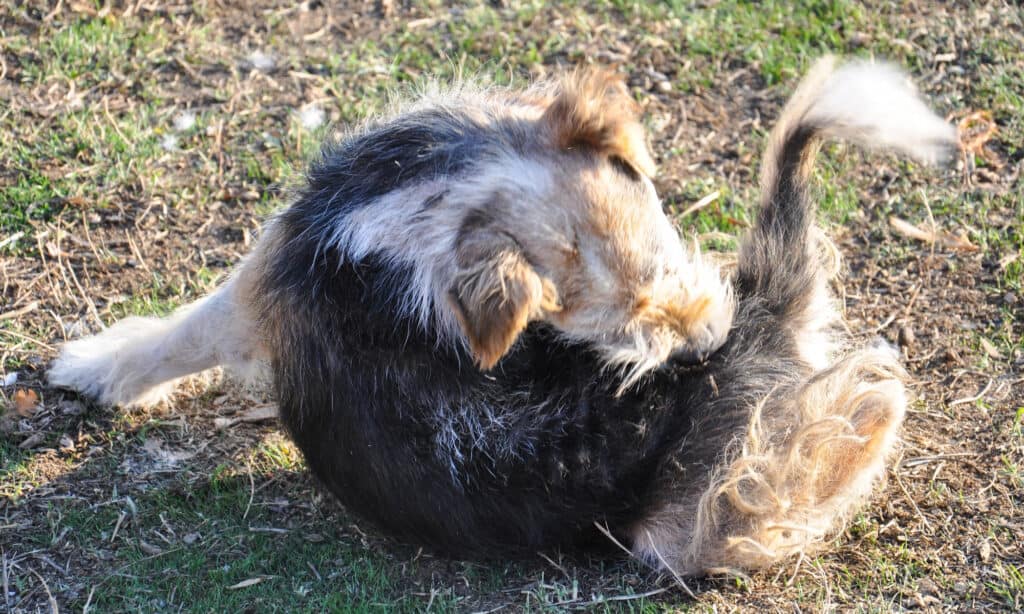
Is Pine-Sol Safe for Dogs? What You Need to Know
Pine-Sol is not safe for dogs and should never be used on or around them. Although Pine-Sol may have some ingredients that could potentially be effective against fleas, it is not formulated or intended for use on animals. Using Pine-Sol on your dog can result in skin irritation, burns, and other harmful effects. Ingesting Pine-Sol can also be toxic to dogs and may cause gastrointestinal issues, vomiting, lethargy, or even organ damage.
When using Pine-Sol to clean your home, follow these safety tips to protect your pets:
- Keep your pets away: Make sure your pets are in a separate room or outside while you’re using Pine-Sol to clean. This will prevent them from coming into direct contact with the product.
- Dilute Pine-Sol properly: Always follow the manufacturer’s instructions for diluting Pine-Sol. Using the recommended dilution ratio will help minimize potential risks to your pets.
- Ventilate the area: Ensure proper ventilation in the area you’re cleaning to disperse fumes and reduce the risk of respiratory irritation for both you and your pets.
- Store Pine-Sol safely: Keep Pine-Sol and other cleaning products in a secure location, out of reach of pets and children.
- Rinse and dry surfaces: After using Pine-Sol on floors or other surfaces your pets may come into contact with, rinse the area with water and allow it to dry completely before allowing your pets access.
For flea control and treatment, always opt for veterinarian-recommended products specifically designed for use on dogs.
Pine-Sol and Puppies: Safety Considerations and Precautions
Pine-Sol should never be used on puppies or adult dogs, as it is not safe for their skin and overall health. Using Pine-Sol on puppies can result in severe skin irritation, burns, and other harmful effects. Moreover, puppies are more vulnerable due to their developing immune systems, smaller size, and inquisitive nature, making the risks associated with Pine-Sol exposure even higher.
To protect puppies and adult dogs from the potential hazards of Pine-Sol, follow these safety considerations and precautions:
- Use pet-friendly cleaning products: Choose cleaning products that are specifically labeled as pet-safe or non-toxic. This will help minimize the risk of harm to your puppy.
- Keep puppies away during cleaning: When cleaning your home with any product, including Pine-Sol, ensure that your puppy is in a separate room or safely confined to prevent exposure to the cleaning agent.
- Proper ventilation: Always clean in well-ventilated areas to disperse fumes and reduce the risk of respiratory irritation for both you and your pets.
- Rinse and dry surfaces: After using any cleaning product on floors or surfaces your pets may come into contact with, thoroughly rinse the area with water and allow it to dry completely before allowing your pets access.
- Safe storage: Store Pine-Sol and other cleaning products in a secure location, out of reach of pets and children.
When it comes to flea prevention and treatment for puppies, always consult your veterinarian for the most appropriate and safe options based on your puppy’s age, size, and health. This may include flea preventatives specifically formulated for puppies or other treatments that are gentle and effective.
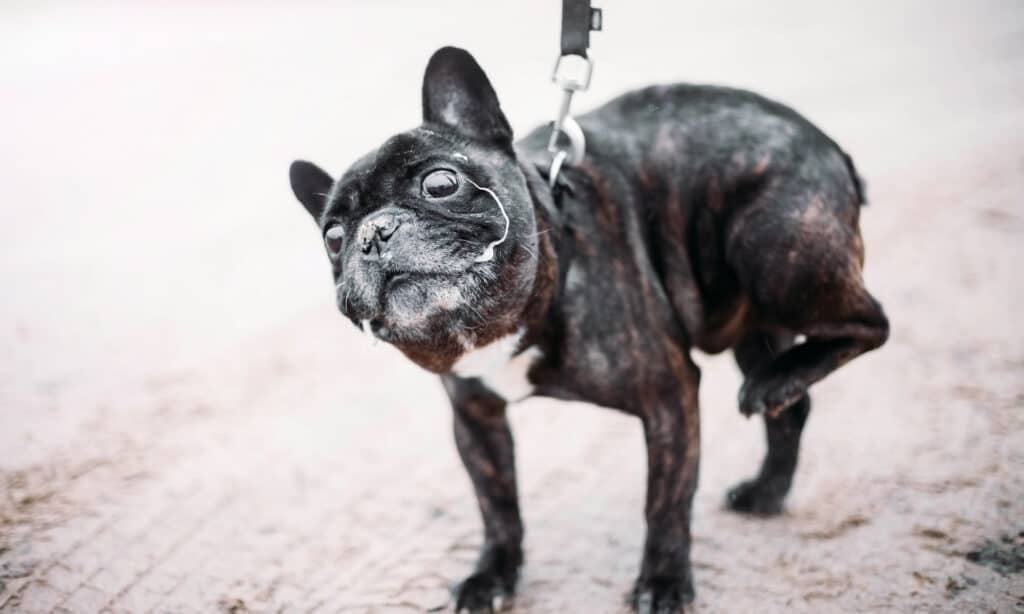
Pine-Sol Toxicity in Dogs: Symptoms and Treatment
Pine-Sol can be toxic to dogs if ingested or if they come into direct contact with it. It is crucial to be aware of the signs and symptoms of Pine-Sol toxicity in dogs, so you can act quickly and seek veterinary help if necessary.
Signs and symptoms of Pine-Sol toxicity in dogs may include:
- Skin irritation: If a dog comes into direct contact with Pine-Sol, it can cause skin irritation, redness, inflammation, and even burns.
- Gastrointestinal issues: If a dog ingests Pine-Sol, they may experience vomiting, diarrhea, and abdominal pain, as the product can irritate the lining of the gastrointestinal tract.
- Lethargy and weakness: Pine-Sol toxicity may cause a dog to become lethargic, weak, or have difficulty walking or standing.
- Excessive drooling: Ingestion of Pine-Sol can cause excessive drooling in dogs, as they try to rid their mouth of the irritating substance.
- Respiratory distress: Inhaling Pine-Sol fumes can lead to respiratory irritation, coughing, and difficulty breathing in dogs.
- Neurological symptoms: In severe cases, Pine-Sol toxicity may cause neurological symptoms such as tremors, seizures, or loss of coordination.
- Organ damage: Ingesting large amounts of Pine-Sol can potentially lead to organ damage, including kidney and liver damage, in dogs.
If you suspect your dog has been exposed to Pine-Sol or is exhibiting any of these symptoms, contact your veterinarian or an emergency veterinary clinic immediately. Early intervention is crucial in minimizing the harmful effects of Pine-Sol toxicity and ensuring the best possible outcome for your pet.
To prevent Pine-Sol toxicity in dogs, always keep cleaning products out of their reach, use pet-safe cleaning alternatives, and take precautions to keep your pets away from areas where Pine-Sol or other potentially harmful cleaning products are being used.
Effective Ways to Kill Fleas on Dogs: Topical Treatment, Flea Collars, and More
There are several safe and effective ways to kill fleas on dogs. Some effective flea control methods include:
- Topical treatments: Flea treatments go on your dog’s skin, often at neck base or shoulder blades. They work by spreading through the dog’s natural skin oils and killing fleas on contact or when they bite.
- Oral medications: Flea pills or chewables are ingested by your dog and work by killing fleas when they bite.
- Flea collars: Flea collars contain insecticides that are released over time, killing fleas on your dog.
- Flea shampoos: Flea shampoos are formulated to kill fleas on contact while cleaning your dog’s fur.
- Flea combs: A flea comb is a fine-toothed comb designed to remove fleas, flea eggs, and debris from your dog’s fur.
- Environmental control: To prevent re-infestation, it is essential to treat your dog’s environment, including bedding, carpets, and upholstery.
- Regular vacuuming: Vacuum your home frequently, focusing on areas where your dog spends most of their time. This will help remove flea eggs, larvae, and adult fleas from your home environment.
It may take several weeks to completely eradicate a flea infestation, so patience and persistence are crucial to successfully managing fleas on your dog and in your home.
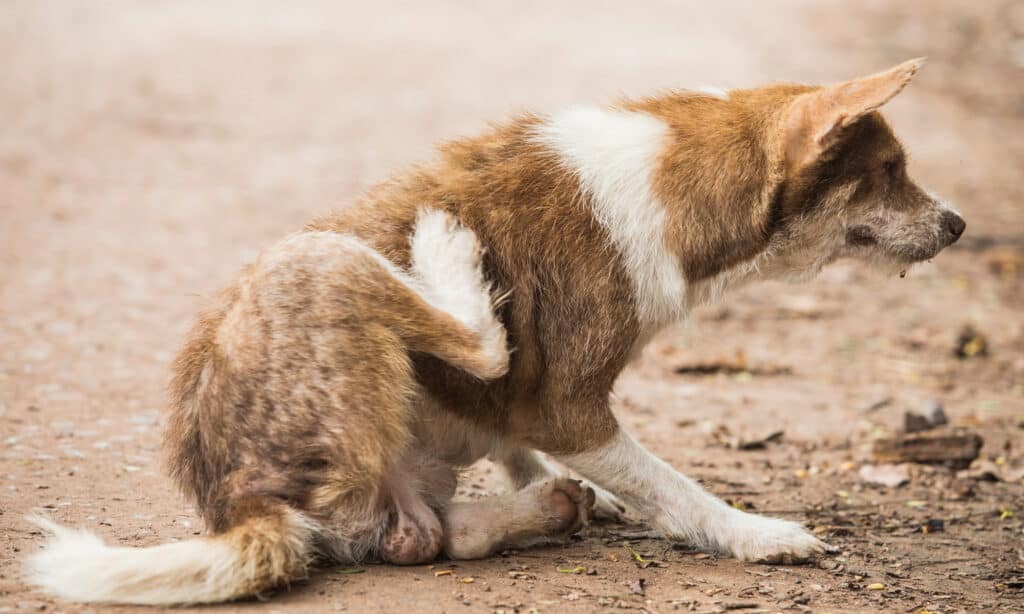
What Household Item Can Kill Fleas on Dogs? Exploring Your Options
Here are a few household items that can potentially help with flea control:
- Dish soap: Bathing your dog with a mild dish soap, like Dawn, can help kill fleas on contact. The soapy water breaks down the flea’s exoskeleton, making it easier to rinse them off. Dish soap may not provide lasting protection against fleas, and using it too frequently can strip the natural oils from your dog’s skin.
- Apple cider vinegar: Some pet owners suggest using diluted apple cider vinegar as a natural flea repellent. Mix equal parts water and apple cider vinegar in a spray bottle and apply it to your dog’s coat, avoiding the face and eyes. While this method may help repel fleas to some extent, it may not be as effective as other flea treatments.
- Diatomaceous earth (food grade): Food-grade diatomaceous earth is a natural powder that can help control fleas by damaging their exoskeleton, causing them to dehydrate and die. Sprinkle the powder on your dog’s bedding and carpets. It is not advised to apply diatomaceous earth directly to your dog’s coat.
- Lemon spray: Boil a sliced lemon in water, let it steep overnight, and then pour the liquid into a spray bottle. Lightly spray your dog’s coat, avoiding the face and eyes. This method may help repel fleas but is not a comprehensive solution for flea infestations.
- Baking soda and salt: Sprinkling a mixture of baking soda and salt on your carpets can help dehydrate flea eggs and larvae. Vacuum thoroughly after a few hours to remove the powder and dead fleas. This method targets the fleas in the environment rather than on your dog.
It’s important to note that these household items might provide temporary relief but may not be as effective as veterinarian-recommended flea treatments specifically designed for dogs.
When to Go to the Vet for Flea Infestations in Dogs
There are certain situations where it’s especially important to seek veterinary help for flea infestations:
- Severe infestations: If your dog is suffering from a severe flea infestation and home treatments aren’t providing relief, a veterinarian can prescribe more potent flea treatments or recommend an appropriate course of action.
- Allergic reactions: Some dogs may develop an allergic reaction to flea bites, known as flea allergy dermatitis (FAD). Symptoms include intense itching, redness, inflammation, and hair loss. A veterinarian can provide treatments to alleviate the symptoms and recommend an effective flea control plan.
- Secondary skin infections: Persistent scratching due to flea infestations can lead to open wounds and skin infections. If you notice signs of infection, such as pus, redness, or swelling, consult your veterinarian for appropriate treatment.
- Anemia: In extreme cases, especially with young or small dogs, a heavy flea infestation can lead to anemia, which is a deficiency of red blood cells. Symptoms of anemia include pale gums, lethargy, weakness, and rapid breathing.
- Tapeworms: Fleas can transmit tapeworms to your dog if they accidentally ingest an infected flea while grooming. If you notice small, rice-like segments in your dog’s feces or around their anus, contact your veterinarian for appropriate deworming treatment.
- Failure of home treatments: If you’ve tried home treatments and flea control methods without success, consult your veterinarian for guidance on more effective options.
- Puppies or senior dogs: Puppies and senior dogs may be more susceptible to complications from flea infestations due to their developing or compromised immune systems. Always consult your veterinarian for the best course of action in these cases.
Your veterinarian can provide expert advice, recommend appropriate treatments, and help monitor your dog’s progress to ensure the infestation is resolved effectively and safely.
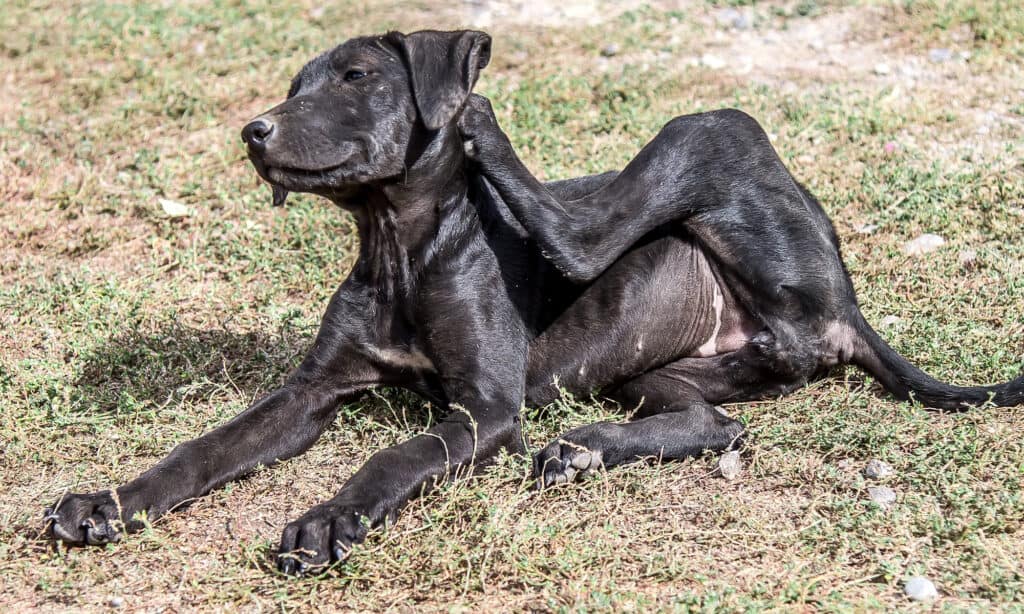
Can You Bathe Your Dog with Pine-Sol? Risks and Benefits
Bathing your dog with Pine-Sol is not recommended, as it can pose significant risks to your dog’s health and well-being. Pine-Sol is a strong household cleaner, and using it on your dog’s skin can lead to irritation, burns, and other harmful effects. Furthermore, if your dog ingests Pine-Sol during the bathing process, it can cause gastrointestinal distress, neurological issues, and potentially organ damage.
Given these risks, there are no benefits to using Pine-Sol as a dog bath solution. Instead, opt for pet-safe shampoos and flea treatments specifically formulated for dogs. These products are designed to be gentle on your dog’s skin while effectively addressing issues such as dirt, odors, or fleas.
By using pet-safe products, you can ensure that your dog stays clean, healthy, and comfortable without exposing them to potentially harmful chemicals.
Dawn Dish Soap and Fleas: How Effective Is It?
Dawn dish soap, a mild dishwashing liquid, has been known to be effective in killing fleas on dogs when used as a temporary solution. The soap works by breaking down the flea’s exoskeleton, causing them to drown and making it easier to rinse them off your dog’s coat. Here’s a brief overview of its effectiveness and how to use it:
- Effectiveness: While Dawn dish soap can be effective in killing fleas on contact, it does not provide long-lasting protection against fleas. It may provide temporary relief for your dog, but it is not a comprehensive solution for flea infestations.
- How to use: To use Dawn dish soap for flea control, wet your dog’s coat thoroughly, apply a small amount of Dawn, and lather it up. Be cautious around your dog’s face, ears, and eyes to prevent irritation. Gently massage the soap into your dog’s fur, focusing on areas where fleas are likely to hide, such as the neck, base of the tail, and under the legs. Leave the soap on for about 5-10 minutes before rinsing your dog thoroughly with warm water. Comb through your dog’s fur with a flea comb to remove any remaining fleas, eggs, and debris.
- Safety: Although Dawn dish soap is mild and generally safe for dogs, using it too frequently can strip the natural oils from your dog’s skin and coat, leading to dryness and irritation. If you choose to use Dawn dish soap for flea control, do so sparingly and follow up with a moisturizing conditioner formulated for dogs.
Dawn dish soap can be a temporary solution for fleas, but it is not a long-term or comprehensive flea control method.

Pine-Sol and Ticks: Can It Kill Them on Your Dog?
Using Pine-Sol to kill ticks on your dog is not recommended due to the potential risks and hazards associated with this cleaning product. Pine-Sol is a strong household cleaner, and its ingredients can cause irritation, burns, and other harmful effects if applied to your dog’s skin. Additionally, if ingested by your dog during the tick removal process, Pine-Sol can lead to gastrointestinal distress, neurological issues, and potential organ damage.
Instead of using Pine-Sol, consider safer alternatives for tick removal and prevention. Here are a few methods to consider:
- Manual removal: If you find a tick on your dog, use fine-tipped tweezers to grasp the tick as close to the skin as possible. Gently pull the tick upward without twisting or crushing it, as this can cause the tick’s mouthparts to break off and remain in the skin. After removing the tick, clean the bite area and your hands with rubbing alcohol or soap and water.
- Tick prevention products: Many flea prevention products also offer protection against ticks. Options include topical treatments, oral medications, and tick collars. Consult your veterinarian for recommendations based on your dog’s specific needs.
- Regular grooming and inspections: Grooming and tick checks prevent problems. Do them after outdoor time, especially in grassy/wooded areas.
- Environmental control: Keep your yard clean and well-maintained to minimize tick habitats. Remove tall grasses, brush, and leaf litter, and keep your lawn mowed. Additionally, consider applying pet-safe tick control products to your yard if you live in a tick-prone area.
Always prioritize your dog’s safety and consult your veterinarian for the best tick control and prevention methods tailored to your pet’s needs.
Can Pine-Sol Harm or Kill Dogs? Risks and Safety Tips
When it comes to the potential harm Pine-Sol can cause to dogs, it is crucial to understand the risks associated with using this household cleaner around your pets. Exposure to Pine-Sol, whether through ingestion or direct skin contact, can lead to a range of health issues in dogs. Ingesting Pine-Sol can cause gastrointestinal distress, vomiting, diarrhea, and in severe cases, neurological problems and organ damage. Direct contact with your dog’s skin may result in irritation, burns, and other harmful effects. In extreme cases, exposure to Pine-Sol could be fatal for dogs. To minimize these risks, always store Pine-Sol and other cleaning products out of your dog’s reach, and avoid using them in areas where your dog spends time.

Does Pine-Sol Kill Fleas on Dogs? The Verdict and Final Thoughts
While Pine-Sol has been suggested as a potential flea killer due to its strong ingredients, it is not a safe or recommended option for treating fleas on dogs. Pine-Sol is a household cleaner that can cause irritation, burns, and other harmful effects when applied to your dog’s skin. If ingested, Pine-Sol can lead to gastrointestinal issues, neurological problems, and potentially organ damage.
The verdict: Pine-Sol should not be used to kill fleas on dogs due to the risks it poses to your pet’s health and well-being.
Final thoughts: When dealing with fleas on your dog, it’s essential to prioritize your pet’s safety and choose products specifically formulated for flea control in dogs. Consult your veterinarian for recommendations on the best flea treatments and prevention strategies for your pet. Flea control options include topical treatments, oral medications, and flea collars, which are designed to be safe and effective for your dog.
In summary, while it might be tempting to try a household cleaner like Pine-Sol to combat fleas, the risks far outweigh any potential benefits. Stick to veterinarian-recommended flea control methods to ensure the health and comfort of your beloved pet.
~Sheena
